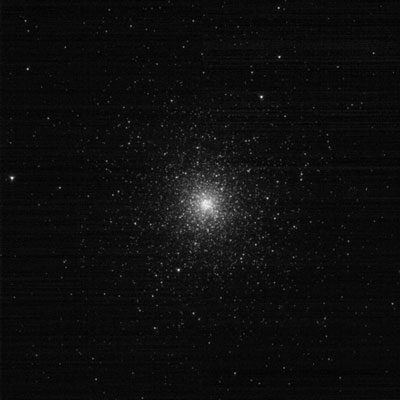Mission Update - May 2005
With information from Dave Spencer, Dennis Wellnitz, Lucy McFadden, and Don Hampton
May 5 - Deep Impact TCM-3A Performance
Deep Impact performed TCM-3A on Thursday at 1900 UTC. The 5.05 m/s maneuver was performed flawlessly, with an execution error of less than 0.2%. Early orbit determination indicates that we are within 25 km of our B-plane target, and are within 1 sec of our desired time of flight.
This TCM was biased early in time of flight by 10 minutes, to ensure that TCM-3B (planned 11 days before encounter) will be in a direction that is favorable for spacecraft power, thermal, and telecom considerations. Following TCM-3B, we should be on a near impact trajectory with comet Tempel-1. Timing of the impact is being adjusted to provide good viewing opportunities by the Hubble Space Telescope and the Earth-based Mauna Kea observatory.
--Dave Spencer
May 10 - May Science Calibration
On Tuesday, May 10, we successfully ran the first day of the May Science Calibration. All targets, including those viewed by the ITS on the Impactor spacecraft, were positioned within the various fields of view with exposures at the desired levels.
We obtained a calibration spectrum of the star Beta Hyi. We also took IR data on the globular cluster 47 Tuc, and took context images with the MRI through the clear filter.
We obtained good calibration data through all filters with the HRI-VIS and MRI-VIS on the stars i Car, Beta Hyi, Canopus, and Achernar. We also obtained good calibration data on these same stars plus HD 60753 with the ITS. This was accomplished with much smaller fields of view (128x128 pixels for MRI-VIS and ITS, and 256x256 for HRI-VIS) than were used in the April Science calibration. The HRI-VIS star images provide multiple well-exposed measurements of the Point Spread Function through each filter, with varying pixel registration.
Over-exposed images of Canopus in all quadrants of the HRI-VIS, MRI-VIS and ITS provide electronic cross-talk corrections. We also obtained darks in MRI-VIS and ITS.
The crowning achievement of the first day of calibration was an ITS mosaic of the open cluster NGC 3114.
We plan to continue with the second day of the May Science Calibration on May 11.
--Dennis Wellnitz
May 17 - Other Science Team Activities
Just after TCM-3A on May 5, the mission entered its approach phase which includes the time period from 60 days to 5 days before impact. We are observing the comet repeatedly in this phase to detect the nucleus and to refine knowledge of the positions of both the spacecraft and the comet. We can see the comet in our imagers now and are monitoring its brightness changes with time. Observations are limited to about 15 minutes every 4 hours because of the position of the Sun with respect to the comet. We can't allow the sun to shine on the instruments.
Don Hampton, one of our instrument engineers, reports the following:
"As part of the May science calibration we took an MRI image (actually there are 6) of 47 Tucanae (also NGC 104), which is a bright globular cluster near the Small Magellanic Cloud. The MRI images were to help determine where we were pointed during an IR scan of the cluster. However, the cluster image is very pretty, so I fixed one up to send out. This is a logarithmic stretch so that all the little dim stars are visible as well as the brightest stars."
While the spacecraft is taking data, the science and mission operations teams are reviewing the sequence of observations and commands to execute them for the Encounter phase, beginning 5 days before impact. The process of designing, reviewing, testing and uploading spacecraft commands that collect the data to complete our experiment is very carefully carried out by teams representing all parts of the spacecraft. (See our Sequence Symphony article.)
The members of the project definitely feel the speed at which the comet is moving through the Solar System. Things are happening quickly and we feel like we're moving at 10 km/s (23,000 mph)!
--Lucy McFadden
















